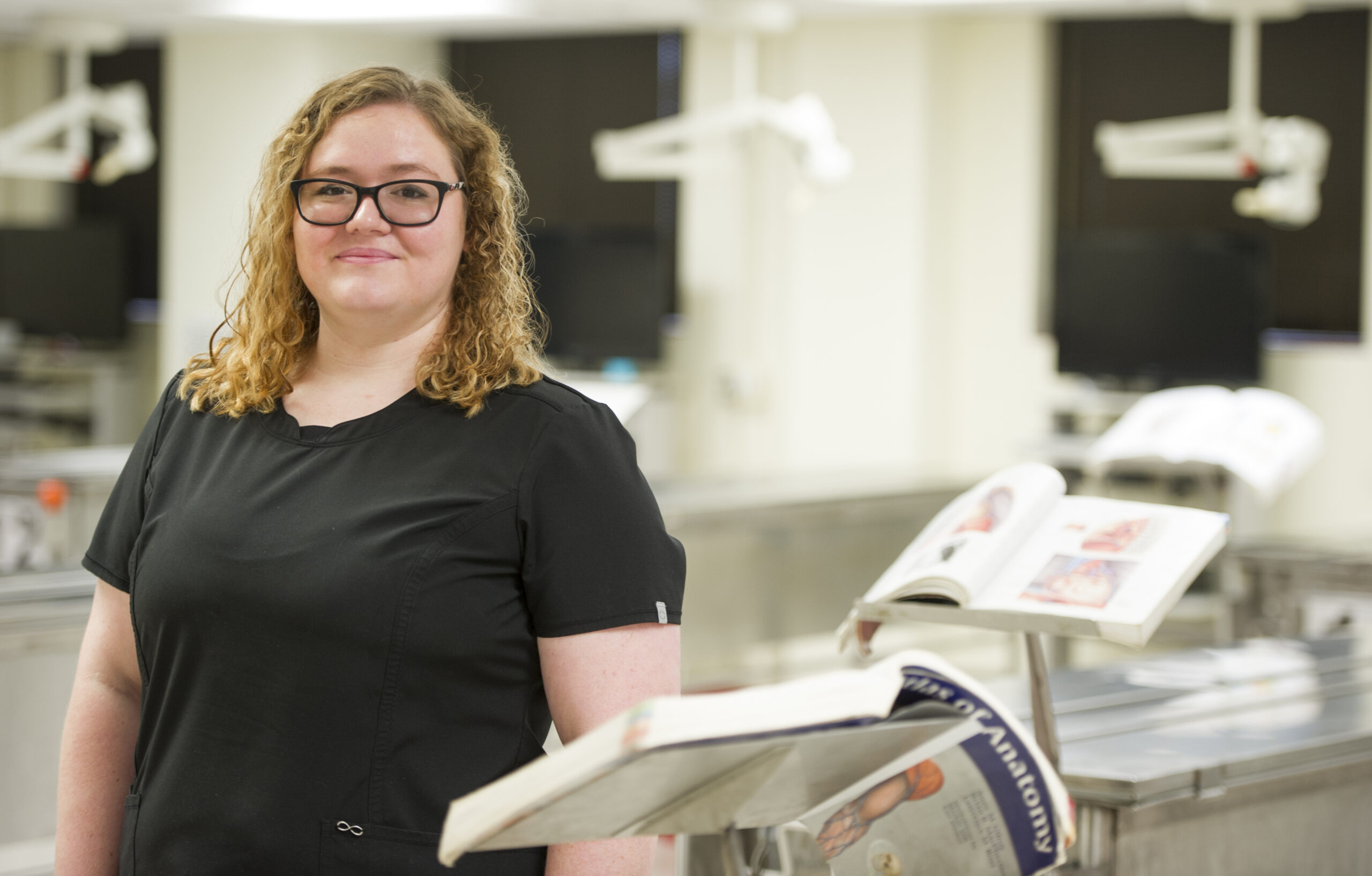Our people

Most of us don’t like to dwell much on what happens to our bodies after we die. Bethany Wright has to think about this unavoidable aspect of life — her job requires it.
The new anatomical lab assistant and coordinator for Texas A&M College of Dentistry’s Willed Body Program is well versed in the sensitivities of discussions about donating a body to science. Whether talking with individuals about their own postmortem wishes or with family members to coordinate arrangements for the remains of a loved one, Wright must all-at-once fill the role of grief counselor and stringent record keeper.
Keeping a pager close by 24/7 is just part of the process. Arranging for quick transport is the primary concern, but accessibility in general is also a factor.
“I feel like I need to build a rapport with these families,” says Wright, who since summer has received commitments to the program from approximately two dozen new members. “We understand that this is a gift. It’s the greatest gift you can give — your whole body. You’re donating to help future medical professionals.”
Maintaining permanent records for program members is another crucial component of Wright’s job. Sometimes that means keeping in touch with people who have enrolled in the program and are still alive — they’re not necessarily conversations that most people are used to having on a daily basis. Much of this starts with community outreach at local nursing homes and senior centers. It gives Wright the opportunity to clear up misconceptions about the program, which provides free cremation and return of ashes to family members once studies are complete. While there is no cost for transport or cremation for those within a 250-mile pickup radius, the notion of not having a traditional funeral can be a deterrent.
“You can still have a memorial service, you can still celebrate life,” Wright says. “The body doesn’t have to be there; don’t let that keep you from donating. It’s important for people to know that we are very respectful of what we do, and we understand the importance of what we have and why we have it.”
Wright is used to working in dual capacities. A former anatomical embalmer at UT Southwestern Medical School, her team coordinated arrangements for more than 1,500 donors a year, deciding what cadavers should be sent to professional schools, to the Air Force, to the Army, even to companies, based on each organization’s educational needs.
With an associate degree in mortuary science and another in biology, Wright is currently pursuing additional biology coursework toward her bachelor’s degree. The ultimate goal: teaching anatomy. It’s something she already does, to a certain extent, during the first-year dental students’ gross anatomy lab course, where she assists faculty with students.
Darla Benson, education specialist in biomedical sciences, works with Wright and used to manage the Willed Body Program.
“Not everyone brings enthusiasm into the workplace like Bethany does,” says Benson. “She is eager to learn and share her knowledge with others.”
While many of the basic sciences courses are digitized, nothing can replace the experience of learning anatomical science in a hands-on way.
“There are just some things you can’t learn from books,” Wright says. “I wouldn’t take my car to a mechanic who has never touched a car before; why would I go to a dentist who has never touched a body before? I don’t see how someone could be a medical professional and not do this.”